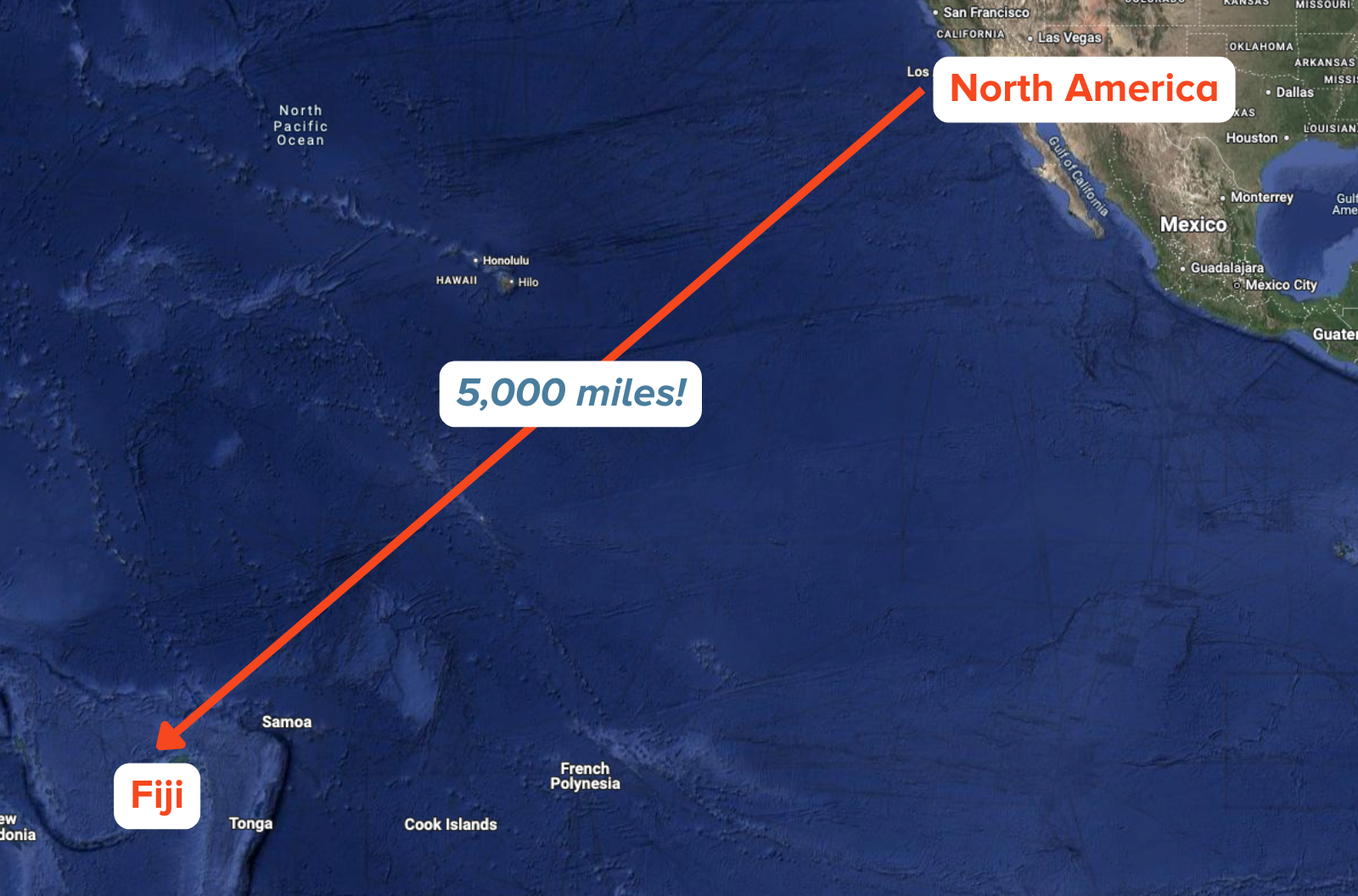Grade Level
All
minutes
15 min - 1 hr
subject
Life Science
stem practices
Planning and Carrying Out Investigations
Activity Type:
family activities, Engineering design challenge
Have you ever gone on a trip with your family, friends, or school? How did you travel? What vehicle did you use?
From high-flying planes, to fast-moving cars, to sea-faring boats, people have invented many types of transportation. Humans have been traveling and exploring the world for as many as 100,000 years. Unlike humans, animals have to make do with what they find, but that doesn’t mean they can’t travel long distances.
Ancient Iguanas Floated 5,000 Miles Across The Pacific
Accidental Animal Travelers
Researchers have found evidence of animals sailing across the oceans on accidental rafts of vegetation, fallen trees, and soil. It’s likely the animals weren’t planning to take a trip. Natural events like storms, hurricanes, or tsunamis probably washed the animals into the water, where they clung to anything they could find.
For example, millions of years ago, lizards may have hitched a ride on a raft of debris and floated about 5,000 miles. Dr. Simon Scarpetta, an evolutionary biologist from the University of San Francisco, found that iguanas from the west coast of North America were closely related to iguanas in Fiji. But how could that be? According to Scarpetta, they floated!

Try This
Your job is to test if a small animal could indeed float on a raft of natural materials across the ocean. Here’s what you’ll need:
- A small stuffed animal
- A bathtub, sink, swimming pool, or plastic bin that can hold water
- Scavenged items such as twigs, leaves, mulch, sod or vines
– Always ask an adult before collecting an item! - A timer (optional)
Create a raft or boat for your stuffed animal. Try different materials to see which are most waterproof. Adjust qualities like the size and shape of the raft or the position of the stuffed animal to increase buoyancy. What other properties could affect the success of your raft?
To test the success of your raft, it must meet the following criteria:
- You may only use natural, collected materials—no glue or tape.
- Both the raft and animal must float for at least 1 minute.
- No part of your stuffed animal can get wet at any time.
What strategies or materials worked best for your raft? How do you know they were successful? What challenges did you face?
Do you think it’s plausible, based on the evidence you have collected, that an iguana could sail across the sea on a raft of vegetation and debris? Why or why not?
Want a bigger challenge? Try these extensions.
- Create a raft that can carry multiple stuffed animals.
- Make a raft that can carry eggs. (Use plastic eggs or ping pong balls.)
- Build a sail for your raft and see if it can catch the wind from a fan to move across the water.
Keep Learning
- Learn more about how iguana (or other animals) can survive the dangerous journey across the ocean by listening to the Science Friday story, “Ancient Iguanas Floated 5,000 Miles Across The Pacific.”
- Surfaces that repel water are called hydrophobic. Discover how plants use this property to repel water in rainforests.
- In her book, “When the Earth Was Green: Plants, Animals, and Evolution’s Greatest Romance,” Riley Black discusses how early primates traveled across the oceans as well. Read Chapter 9 to discover how plants may have played a part.
Sign Up For Our Educational Newsletters
Get great educational resources for your classroom, home, and beyond to your inbox each month.
K-12 Education Beyond The Classroom
Credits:
Lesson by Sandy Roberts
Copyediting by Diana Plasker
Digital Production by Sandy Roberts
Meet the Writer
About Sandy Roberts
Sandy Roberts is Science Friday’s Education Program Manager, where she creates learning resources and experiences to advance STEM equity in all learning environments. Lately, she’s been playing with origami circuits and trying to perfect a gluten-free sourdough recipe.
